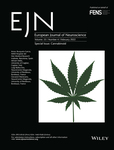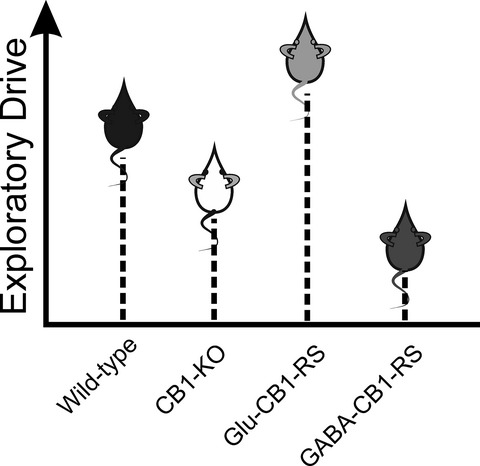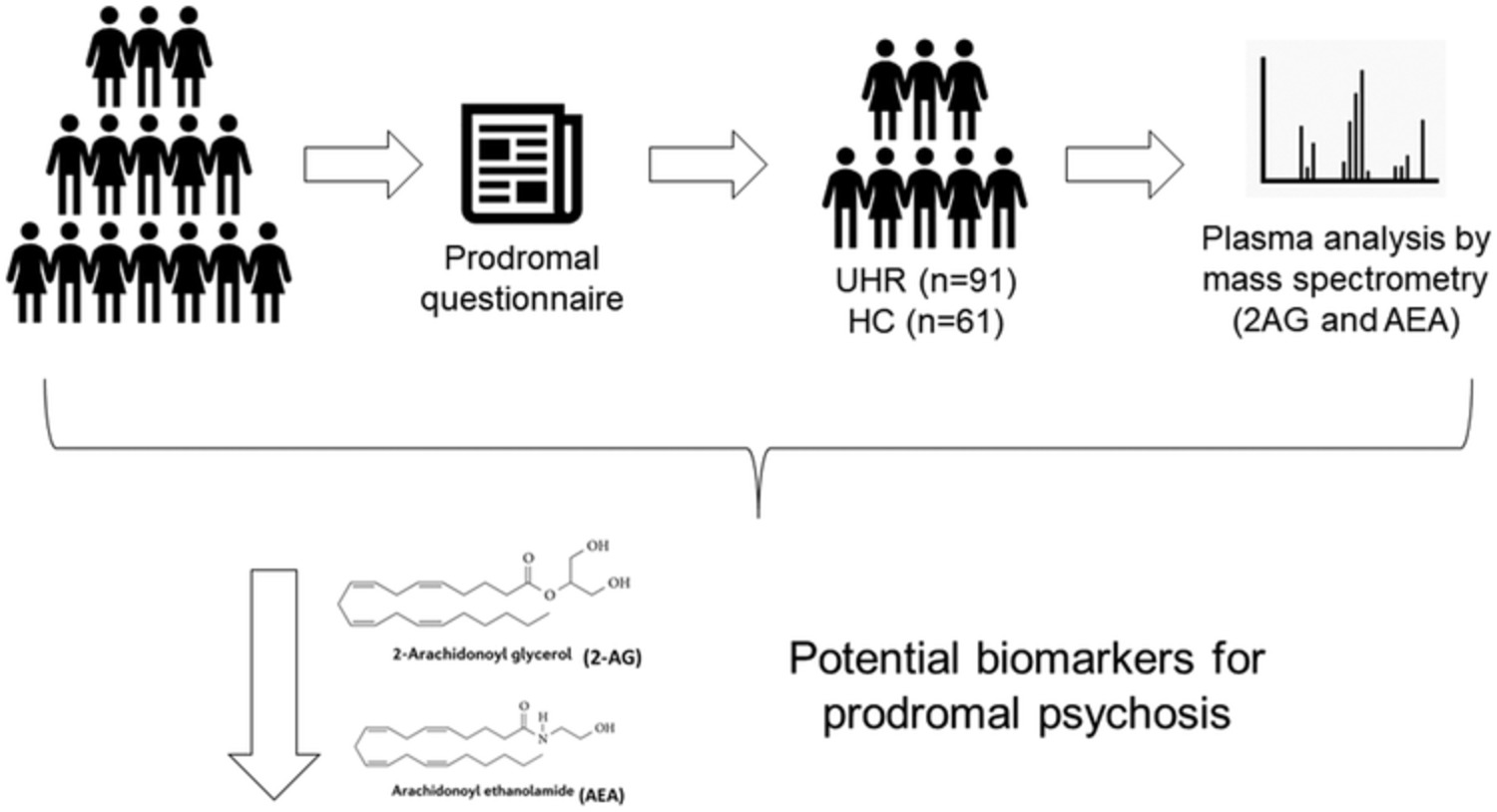Journal list menu
Export Citations
Download PDFs
ISSUE INFORMATION
SPECIAL ISSUE EDITORIAL
Special issue editorial: Cannabinoid signalling in the brain: New vistas
- Pages: 903-908
- First Published: 03 February 2022
SPECIAL ISSUE REVIEW
The neuropharmacology of cannabinoid receptor ligands in central signaling pathways
- Pages: 909-921
- First Published: 24 September 2020

The endocannabinoid system is a modulatory system, with endocannabinoids as retrograde neurotransmitters. Neuropharmacology of cannabinoid ligands in the brain can therefore be understood in terms of their modulatory actions through other neurotransmitter systems. An overview of the neuropharmacology of several cannabinoid receptor ligands, including endocannabinoids, herbal cannabis, and synthetic cannabinoid receptor ligands is given in this review. Their mechanism of action at the endocannabinoid system is described and effects of cannabinoid ligands on other neurotransmitter systems will be described.
SPECIAL ISSUE ARTICLES
The effects of fatty acid amide hydrolase inhibition and monoacylglycerol lipase inhibition on habit formation in mice
- Pages: 922-938
- First Published: 27 January 2021

Here, we used selective pharmacological compounds during operant training to determine the impact of increased anandamide (and other FAAH substrates) or 2-AG levels on the formation of habitual behaviors in mice using a food-reinforced contingency degradation procedure. We found, contrary to our hypothesis, that FAAH and MAGL inhibition disrupted the formation of habits.
Cell type-specific genetic reconstitution of CB1 receptor subsets to assess their role in exploratory behaviour, sociability, and memory
- Pages: 939-951
- First Published: 30 November 2020
SPECIAL ISSUE REVIEWS
In it together? The case for endocannabinoid–noradrenergic interactions in fear extinction
- Pages: 952-970
- First Published: 24 March 2021
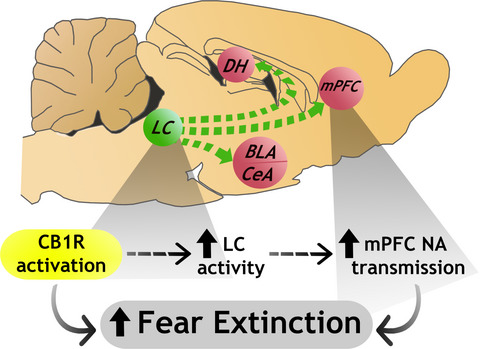
Both endocannabinoid (eCB) and noradrenergic (NA) signalling are linked to PTSD and fear extinction, but interactions between these systems in relation to fear extinction are largely unexplored. CB1 receptor activation facilitates fear extinction and increases prefrontal NA transmission, which is also associated with augmented fear extinction. Interactions between the eCB and NA systems may contribute to the regulation of fear extinction, which may have implications for PTSD treatment.
Endocannabinoids and cortical plasticity: CB1R as a possible regulator of the excitation/inhibition balance in health and disease
- Pages: 971-988
- First Published: 11 January 2021
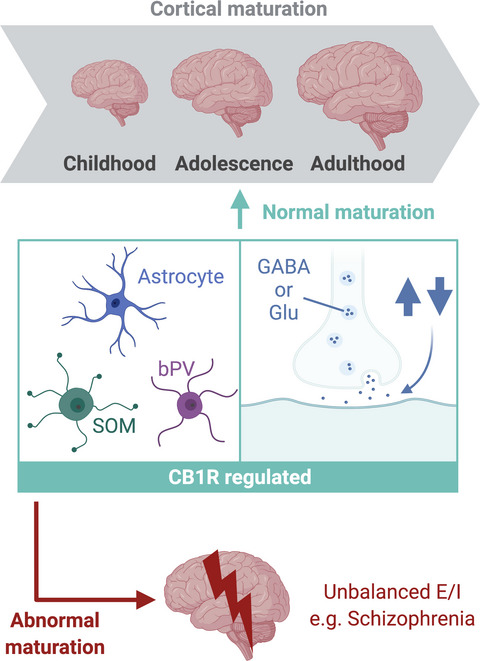
Plasticity of the neocortex during childhood and adolescence shapes the adult excitability of the cortex. Key components of this plasticity are astrocytes, somatostatin (SOM) interneurons, parvalbumin basket cells (bPV), GABA and Glutamate (Glu) release and thus the Excitation/Inhibition (E/I) balance. They are regulated by the endocannabinoid system through the CB1 receptor. The same components happen to be dysregulated in schizophrenia, a condition characterized by unbalanced E/I.
SPECIAL ISSUE ARTICLES
Cannabinoid Receptor Type 1 regulates growth cone filopodia and axon dispersion in the optic tract of Xenopus laevis tadpoles
- Pages: 989-1001
- First Published: 20 January 2022
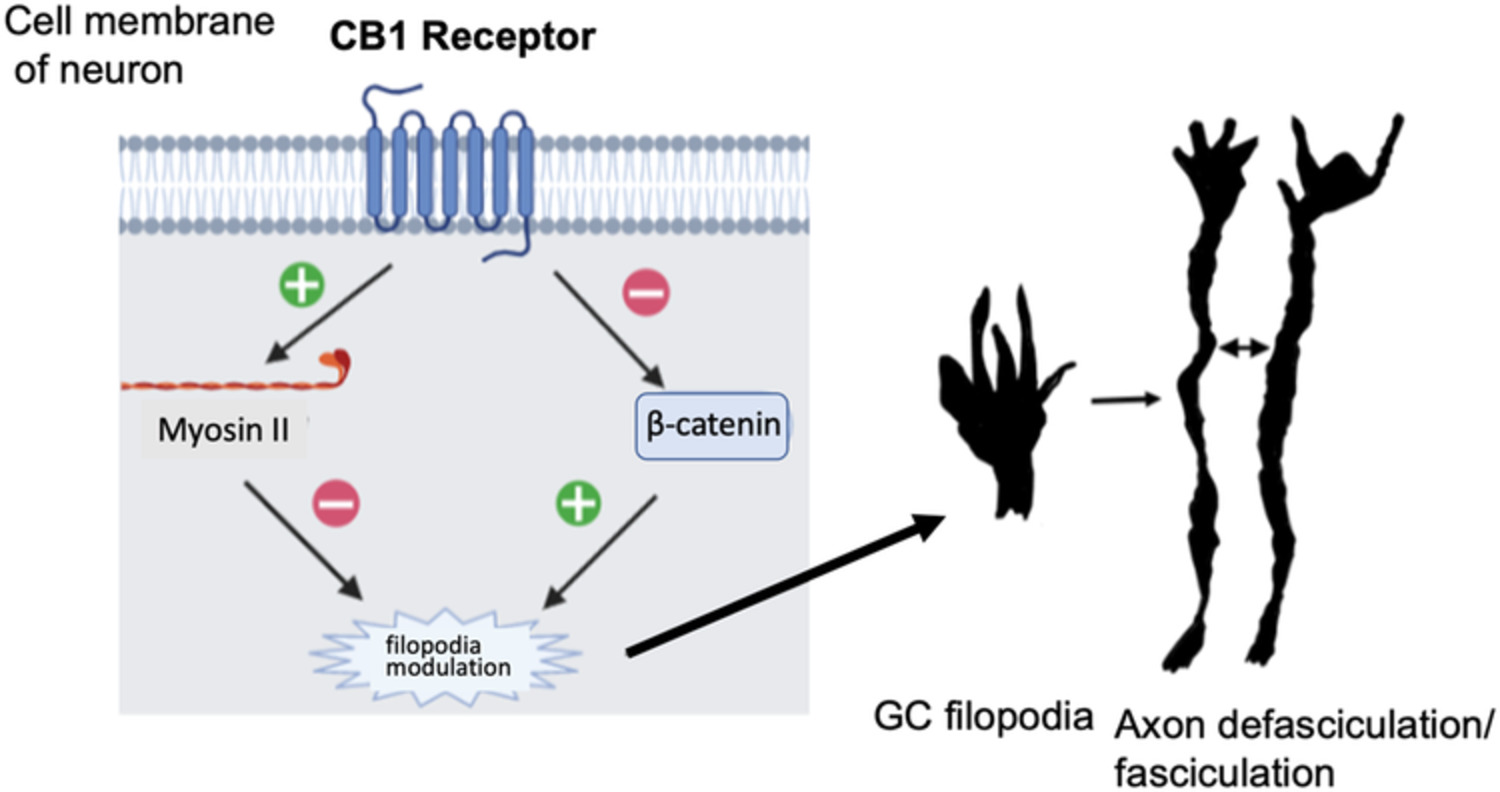
Growth cones exposed to CB1R agonist had fewer filopodial protrusions, whereas those exposed to CB1R inverse agonist had more filopodial protrusions than controls. A β-catenin mutant induced the same effects as CBR agonist, while an inhibitor of Myosin II phenocopied the inverse agonist on growth cone filopodia. These results imply that the activation of CB1R results in negative regulation of β-catenin and positive regulation of Myosin II, which both ultimately leads to fewer filopodia protrusions. By oppositely modulating β-catenin and Myosin II, CB1R regulates growth cone filopodia and the balance of destabilization/stabilization of the filopodia results in proper axonal defasciculation in the tract.
Endocannabinoid-mediated neuromodulation in the main olfactory bulb at the interface of environmental stimuli and central neural processing
- Pages: 1002-1014
- First Published: 16 March 2021
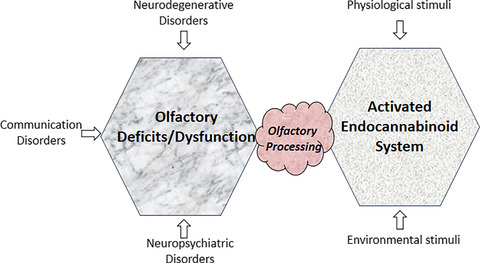
Olfactory processing is at the center of an activated endocannabinoid system and as a bridge to olfactory deficits and dysfunction. Physiological and environmental stimuli activate the endocannabinoid system, whereas neurodegenerative, neuropsychiatric and communication disorders can manifest themselves as olfactory deficits.
Receptor mechanisms mediating the anti-neuroinflammatory effects of endocannabinoid system modulation in a rat model of migraine
- Pages: 1015-1031
- First Published: 08 July 2020
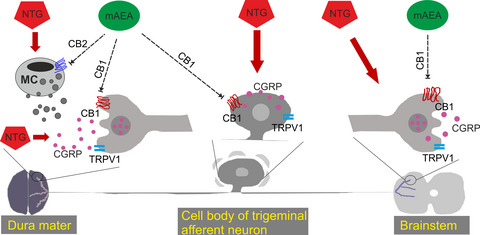
Nitroglycerin induces degranulation of dural mast cells, and increases CGRP release from peripheral terminals of trigeminal sensory nerves in meninges and the central terminals in the brainstem, and also cell bodies of trigeminal ganglion neurons, respectively. Methanandamide alleviates nitroglycerin-induced these changes in the CGRP release through CB1 receptors, and in mast cell degranulation through CB2 receptors. NTG: nitroglycerin, mAEA: methanandamide, MC: mast cell, R: receptor, CB1: cannabinoid receptor-1, CB2: cannabinoid receptor-2, CGRP: calcitonin gene-related peptide, TRPV1: transient receptor potential vanilloid-1. While straight red arrows depict the activation, black arrows with dashed line delineate the inhibition.
SPECIAL ISSUE REVIEW
Recent advances in the understanding of the aetiology and therapeutic strategies in burning mouth syndrome: Focus on the actions of cannabinoids
- Pages: 1032-1050
- First Published: 24 February 2020

Burning mouth syndrome (BMS) is a neuropathic pain disorder associated with a burning sensation on oral mucosal surfaces. Although still poorly understood, it is believed to be a multifactorial disease with four underlying pathophysiological mechanisms: neuropathic, immunological, hormonal and psychological. Due to its complexity, there is no cure and current treatments lack efficacy. In this context, cannabis-based therapeutics may present a potential therapeutic alternative for BMS.
SPECIAL ISSUE ARTICLES
An optimized spectrophotometric assay reveals increased activity of enzymes involved in 2-arachidonoyl glycerol turnover in the cerebral cortex of a rat model of Alzheimer’s disease
- Pages: 1051-1062
- First Published: 19 August 2020
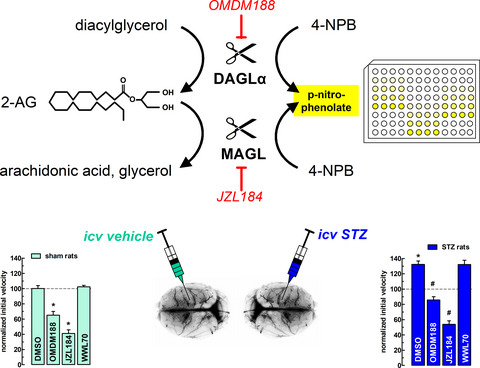
2-AG is the principal endocannabinoid molecule. 2-AG signaling is altered in many brain diseases, thus, targeting the key 2-AG turnover enzymes, DAGLα and MAGL is an emerging therapeutic strategy. We optimized a technique for ex vivo brain homogenates, using the surrogate chromogenic DAGLα and MAGL substrate, 4-NPB. We observed increased DAGL and MAGL activity in the cerebral cortex of a rat model of sporadic AD. This assay also can facilitate the discovery of novel DAGLα and MAGL inhibitors.
Dissociable changes in spike and wave discharges following exposure to injected cannabinoids and smoked cannabis in Genetic Absence Epilepsy Rats from Strasbourg
- Pages: 1063-1078
- First Published: 28 December 2020

Genetic Absence Epilepsy Rats from Strasbourg (GAERS) spontaneously produce spike-and-slow wave discharges (SWDs). In the first experiments assessing cannabinoids in GAERS, injected tetrahydrocannabinol (Δ9-THC) dose-dependently increased SWDs, whereas injected cannabidiol (CBD) reduced these events. Furthermore, smoke exposure from high-Δ9-THC cannabis increased SWDs, but high-CBD cannabis had no effect. These experiments show dissociable effects using two different exposure paradigms.
Plasmatic endocannabinoids are decreased in subjects with ultra-high risk of psychosis
- Pages: 1079-1087
- First Published: 29 October 2021
Functional interactions between cannabinoids, omega-3 fatty acids, and peroxisome proliferator-activated receptors: Implications for mental health pharmacotherapies
- Pages: 1088-1100
- First Published: 27 October 2020




